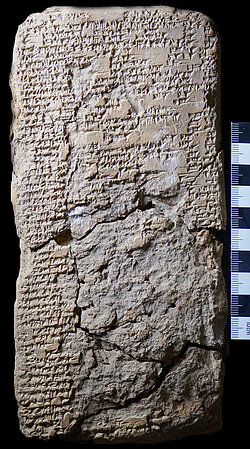Work Programme Ancient Near Eastern Studies
As one of the three Würzburg core teams, Ancient Near Eastern Studies contributes to all three MagEIA Research Areas (RA):
In RA3 ("Annotation"), we will use the lexically annotated Corpus of Mesopotamian Anti-witchcraft Rituals online as a pilot corpus for testing an extended annotation of magical texts. In RA2 ("Language"), we contribute Sumerian and Akkadian terminologies to the collective work. In RA1 ("Texts"), we treat texts central to the understanding Mesopotamian magic in tandem with parallel projects of the Egyptology core team.
In a common thematic focus with Egyptology, the research of the postdoctoral position concentrates on an account of the use of magical rituals in the service of kings, especially in first-millennium Babylonia and Assyria. Building on our own and others' preliminary works on ritual texts, but also based on the scholarly correspondence at the seventh-century Assyrian royal court, this topic can now be treated comprehensively. As a text editorial component, this study will include a commented edition and analysis of the most important royal purification ritual, the so-called "Bathhouse Ritual" (Bīt rimki).
PI Schwemer devotes his research in phase 1 of MagEIA – again in coordination with Egyptology – to a ritual for the protection of a house and its inhabitants called "House of Enclosure" (Bīt mēseri). This extensive text has never been adequately edited, although it is a key text of Babylonian-Assyrian exorcistic lore (āšipūtu). Bīt mēseri is a prime source for investigating how the exorcist systematically occupies, purifies, and protects spaces through the use of figurines and images. At the same time, Bīt mēseri shows how mythological figures are envisioned and represented in Mesopotamian magical rituals. The merging of the mythological past with the patient's present, which is inherent in every Mesopotamian magical ritual, can be traced step by step. Finally, the ritual is one of the most important sources for the protective spirits, deities, and demons of Mesopotamian magic and one of the central texts for the study of the so-called scapegoat rite.







